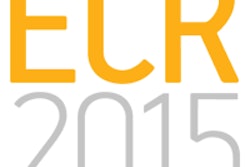CT scans with 4D image reconstruction can separate parathyroid adenomas and hyperplastic lesions into three distinct lesion types based on enhancement patterns, alerting surgeons to the variations they will find, according to a study in Radiology. The findings also indicate that a three-phase scanning protocol is still needed, the authors believe.
The group from Duke University Medical Center performed a study of nearly 100 patients, classifying the types of contrast enhancement patterns that occurred in three-phase CT studies with 4D reconstruction. Knowing how to interpret enhancement patterns would be useful for radiologists who are new to 4D imaging of such lesions, and the results also help justify the use of triphasic protocols, which are indispensable for confident diagnosis.
Indeed, the most common pattern could be diagnosed with just two CT phases, but it would mean potentially missing the diagnosis of almost a quarter of the lesions, wrote lead author Dr. Manisha Bahl and colleagues (Radiology, May 29, 2015).
3 enhancement patterns
4D CT of the parathyroid is used to localize parathyroid adenomas before surgery and distinguish them from similar-appearing findings, such as thyroid nodules or lymph nodes. The 4D protocol requires two or more contrast phases in the neck and upper chest. The typical lesion has lower attenuation than the thyroid gland in the noncontrast-enhanced phase, peak enhancement greater than the thyroid gland in the arterial phase, and washout of contrast in the delayed phase, noted the study team.
The typical enhancement pattern may not occur in all cases, however, and a failure to appreciate this variability in enhancement can result in missed lesions, Bahl and colleagues warned.
"In our clinical experience, we have observed three relative enhancement patterns of parathyroid lesions compared with the thyroid gland on 4D CT scans," they wrote. However, this variability in enhancement is not discussed in prior studies. Their goal in the current study was to describe the prevalence of the three lesion types and their enhancement patterns.
The study retrospectively reviewed 4D CT scans of the parathyroid region obtained preoperatively in a group of 94 patients with pathologically proven thyroid adenomas or hyperplasia. Three readers classified lesions subjectively into one of three relative enhancement patterns:
- Type A lesions were higher in attenuation than the thyroid on noncontrast CT, but patterns differed in the two contrast-enhanced phases.
- Type B lesions were not higher in attenuation than the thyroid in the arterial phase, but they were lower in attenuation than the thyroid in the delayed phase.
- Type C lesions were neither higher in attenuation than the thyroid in the arterial phase nor lower in the delayed phase.
Bahl and colleagues Dr. Ali Sepahdari, Dr. Julie Sosa, and Dr. Jenny Hoang looked at the prevalence of the relative enhancement patterns, comparing mean attenuation differences in Hounsfield units between them.
All 4D CT scans were performed on a 64-detector-row CT scanner (Discovery CT750 HD and LightSpeed VCT, GE Healthcare) at 0.625-mm slice thickness. Other parameters included 0.4-sec tube rotation time, 120 kV (peak), and automatic tube current modulation with a maximum of 700 mAs for the arterial phase and 500 mAs for the other two phases. In addition, 53% of the patients underwent ultrasound before 4D CT, and 40% had nuclear medicine scintigraphy.
The first CT scan was a nonenhanced phase to cover the thyroid gland. This was followed by the two contrast-enhanced scans with 75 mL of iopamidol (Isovue-300, Bracco) at 4 mL/sec and a 25-mL saline chaser. All images were interpreted on a PACS network.
High sensitivity, especially for typical patterns
There were 110 parathyroid lesions among the 94 patients, including 11 patients with multigland disease. Determining the enhancement pattern resulted in a sensitivity of 94% for single-gland disease and 59% for multigland disease, according to the authors.
| Lesion characteristics according to enhancement pattern | |||||
| Description | All lesions | Type A | Type B | Type C | p-value |
| Adenoma or hyperplasia | 94 | 19 | 54 | 21 | -- |
| Single-gland disease | 78 | 16 | 45 | 17 | 0.96 |
| Multigland disease | 16 | 3 | 9 | 4 | 0.62 |
| False-positive lesions | 5 | 0 | 0 | 5 | < 0.001 |
| Mean maximum diameter at CT (mm) | 13.2 ± 7.8 | 12.0 ± 5.6 | 14.0 ± 8.6 | 10.1 ± 4.4 | 0.11 |
The readers agreed on lesion categorization 90% of the time. The five false-positive lesions were all type C, and nine of 16 lesions that were missed on CT (false negatives) could be seen on the images in retrospect (mean diameter, 9.2 mm), the authors reported.
The most common enhancement pattern was type B, with a prevalence of 57%, followed by type C at 22% and type A at 20%.
"Type B ... accounted for more than half of all lesions and could be diagnosed confidently with two contrast-enhanced CT phases alone," Bahl and colleagues wrote. "However, almost one quarter of lesions had the type C pattern, which could be challenging to differentiate from thyroid tissue without the nonenhanced phase."
Atypical enhancement of parathyroid lesions is valuable information for radiologists who are less familiar with 4D CT images, they noted. Previous studies didn't catch these variations because they quantified enhancement as average values for tissue types across lesions.
"In our study, reasons for the variation are not related to lesion size, location, or multigland disease status," the authors wrote. "However, other possible factors that we did not measure are differences in a patient's cardiac output (affecting the delivery of contrast material to the adenoma), local blood supply to the parathyroid lesion, and image noise related to patient body habitus."
Some have advocated for fewer than three phases owing to radiation concerns, but this study demonstrates that even though lesions can be detected with two phases, they cannot be reliably classified by type. This could result in lower confidence or missed lesions, according to Bahl and colleagues.
Study limitations included its single-center and retrospective design. Also, potential study subjects who did not undergo surgery were excluded, which may have overestimated the sensitivity of 4D CT because those not operated on may have a greater chance of a negative or indeterminate result.
The relative enhancement patterns combined with morphological features of parathyroid lesions could be valuable in developing a confidence score in a future study, the authors wrote.
"The implication would be that if a lesion is confidently consistent with a parathyroid adenoma on 4D CT scans, additional imaging with other modalities may not be necessary," they wrote.




















